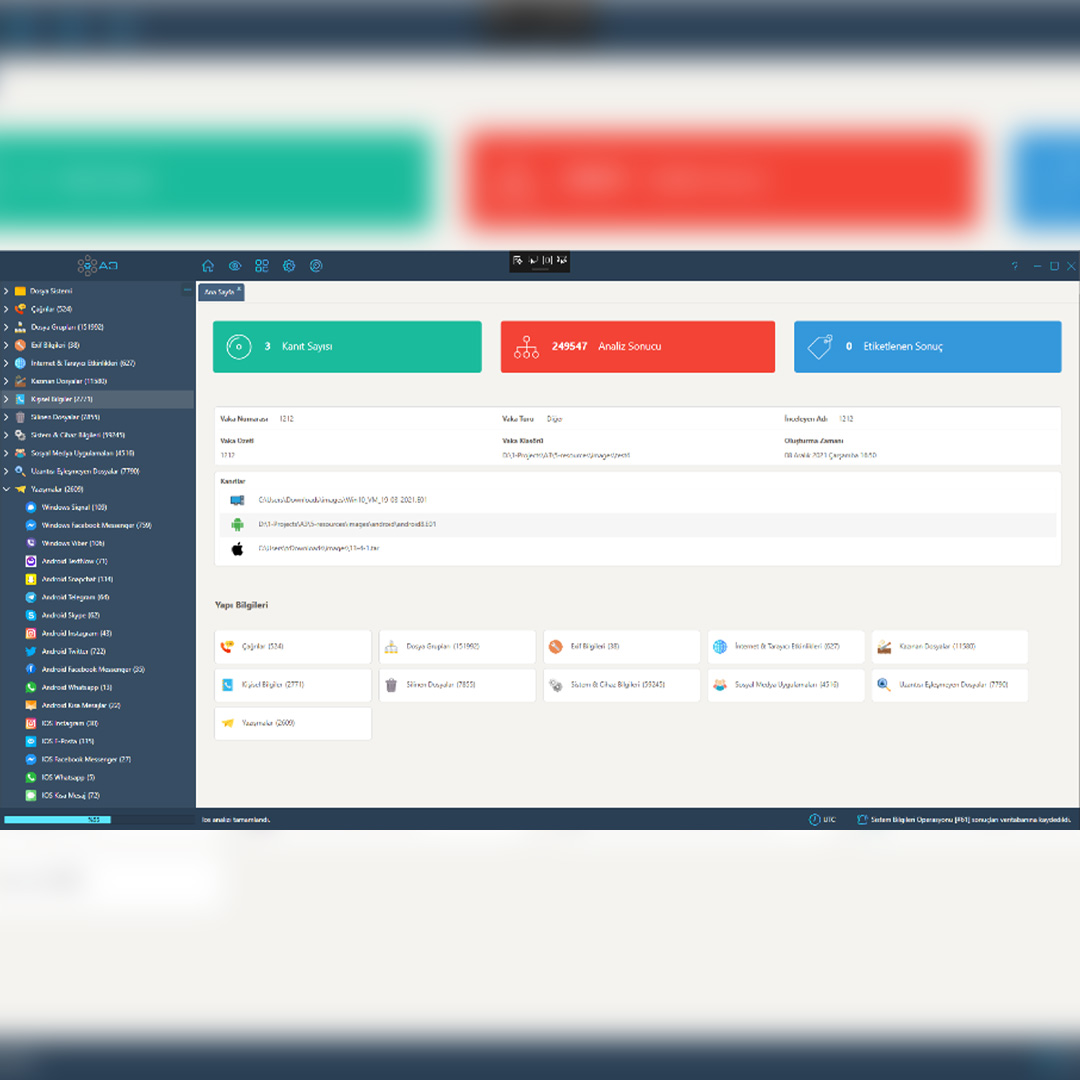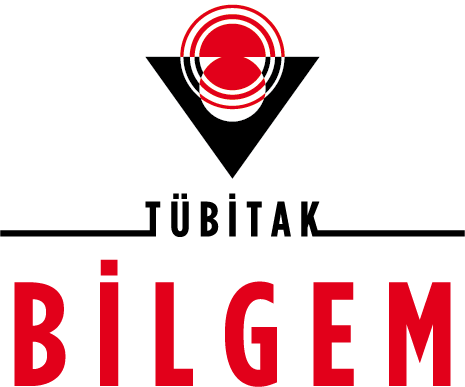BİLGEM
Cyber Security
ORION - Data Security Platform
- Product information
- headquarters
- Application Capabilities
- E-mail Gateway
- Web Gateway
ORION Data Security Platform is a data leakage prevention system that provides solutions against possible unauthorized access, use or sharing scenarios of sensitive data with common management panel, network and endpoint environments.
Identifying policy and rule: Identifying exceptions, identifying customized conditions, determining impact and actions.
Identifying content classifier: Identifying the content to be protected. Classifiying by features such as dictionary terms, regular expressions or file properties, classifying file with one-to-one or fragmented summary, classifying capabilities with machine learning methods.
Identifying institution entity: Identifying the sources and destinations of the data to be protected, the endpoint devices or applications that can be used. Creating app black and white list, setting app screenshot permission.
Analyzing and reporting record:
- Ability to track records of events taking place in the Management Center,
- Events that occur in the Management Center network agents,
- Data leakage records and operating system events occurring on endpoints,
- Data breaches detected as a result of network scanning.
Identifying user role Creating Admin Center roles (Event Manager, Policy Manager, System Admin, Super Admin, Customized)
Others: SIEM and active directory server integration. Secure file storage and review (forensic). Responding to temporary stop requests, interoperability with 3rd party file tagging products. Backing up database with advanced, editing central endpoint settings, setting up mail notification server, receiving system updates remotely, automatic end-user time synchronization with scalable architecture.
Data analysis in use:
- File system check (cut, copy and paste)
- Endpoint "http/https" channel security with browser plugin
- External media channel security
- Printer channel security
- Preventing taking screenshots of unauthorized applications
- Application control (trusted and untrusted application)
- Endpoint e-mail channel security with the Outlook ORION add-in
Static data analysis:
- File and directory indexing and tagging
- Database indexing (PostgreSQL, MS SQL, Oracle, MySQL…)
- Manual file tagging
- Automatic file tagging at certain periods with time synchronization
Operating system event tracking:
- Events related to system usage (New process start, process stop, service start, service stop, new program installation, program removal)
- User related events (Adding and logging new admin user, deleting and logging admin user, password changing and logging of admin user, adding and logging domain user, deleting and logging domain user).
- File and directory related events (File creation, file deletion, file name change, file content modification, file security settings change)
Policy check:
E-mail content and attachment control. Sender and receiver domain inquiries. Taking policy-based actions. Policy-based action (blocking, encryption, quarantine, logging).
Encrypted e-mail check:
TLS is a third-party encryption application.
Policy check:
Content and file control (http/https). URL category and IP based blocking. Taking policy-based actions.
Harmful Content control:
Integration with third-party malware services.


DERBENT - Secure Remote Access System
- Components
- Secure Remote Access Design
- Client Settings
- Client Installation Package
- Server Certificate
- System Topology
- Key Features
Client Side
- Compressed image
- Installation of security tools (Antivirus, Logging Agents etc.),
- Limitation of user environment authorizations,
- Only install agent software suitable for this environment.
Server Side
- Keeping the certificate of the server in the HSM,
- Server hardening,
- Remote access management (VPN authorization definitions, instant client monitoring, etc.).
End User Side
- The user must be registered with the authority that manages the corporate working directories.
- The user must have the password for his own account.
- The user should only have a self-owned and authenticated certificate running on other hardware.
This design achieves 3 important goals:
Zero Trust
- Client
- Presenter
Policy Check / Connection Blocking
- Operating System Security Policies
- Security Applications Control
2 Factor Authentication
- LDAP Integration
- Identity Card/Token Certificate Inquiry (OSCP)
Client settings are normally kept in a readable file. VPN session is started according to the settings in this file.
In Secure Remote Access:
- The user is encrypted with the public key.
- When necessary, it is opened only with the user secret key.
- It will be blocked from working in another domain.
The client installation package is prepared to be run only on the environments belonging to the corporate domain. In this way:
- Client software, certificate usage infrastructure and encrypted settings file can only be run on a corporate environment.
- During installation, the user's certificate must also be connected to the system.
- The settings file is edited and encrypted according to the user's certificate during installation.
The Server Zero Trust Certificate is stored by the HSM and the client's authentication is handled by the HSM.
In this way:
- Clients are prevented from being forwarded to a cloned server.
- HSM only fulfills requests of a VPN server serving from a specific IP that it needs to respond to.

Domain Control: The agent can only be installed on computers that are included in a specific domain.
Encryption: Configuration files are encrypted with the certificate that the person has.
Bypass blocking: The user is prevented from making a VPN connection by bypassing the controls.
Anti-Clone: Server cloning is prevented by keeping the server certificate on the HSM.
Audit: With policy control, the agent is assured of endpoint security.
External Certification Authority: The external user certificate authority controls the generation of unnecessary certificates as well as reliable certificate management.
Group VPN: With the grouping feature, ISOLE VPN tunnels will be created for different units or roles.
Restricted Internet Access: By providing internet access only with VPN, user internet access is restricted. In case of limited internet access, Remediation Network is activated to meet the update needs.
Remediation Network: If the user computer fails to pass the policies, it is directed to a different VPN and network for needs such as updates.
Client-Server Authentication: For the "zero trust" mechanism, the server and client authenticate each other before the session starts.
CYBERLAB - Virtual Cyber Security Laboratory
- General Features
- abilities
- Usage areas
- Lab Access
- Ansible Powered Scoring Interface
Developing cyber security technologies direct users to virtual environments that can be designed quickly and easily for application-oriented trainings, exercises and analysis laboratories. With the Virtual Cyber Security Laboratory Infrastructure, topologies including network devices and computers can be designed, and it is ensured that the user can access the designed environments quickly (without any resource requirement) via the browser.
Virtual Cyber Security Laboratory and Practice Infrastructure can create activities such as cyber security training, testing, exercises and cyber security analysis on virtual environments created on the cloud quickly, easily and at low cost.

- Server virtualization infrastructure
- Fast, secure and isolated lab access
- Visual lab design interface
- Ready-to-use lab environment templates
- Virtual machine images prepared by experts
- Creating a new image
- Quota management by user groups
- Drill interface
- Ansible powered scoring interface
- Cyber security analysis lab
- Malware analysis lab
- Forensic analysis laboratory
- Hands-on learning environment
- Cyber security competitions and exercises
- Users can access virtual machines created on Cyberlab via web browsers with SSH, VNC or RDP protocols.


- Virtual machines launched on Cyberlab can be customized with the software library created using Ansible.
- Thanks to this feature, which works integrated with Cyberlab, it is possible to automatically evaluate user activities on virtual machines.



BOT-SEGEN - Information and Automation Technologies Penetration Testing and Security Audit Platform
- Product information
- abilities
- Features
- BOT-SEGEN is based and used in different projects and proves its functionality and performance.
- By automating penetration tests and security audits on a single platform without the need for deep expertise, it is ensured that individuals/institutions provide advantages in terms of time and cost in their current processes, and that individuals/institutions who do not currently operate these processes can operate these activities.
- While minimizing the need for experience in related processes, it automates the steps that experienced cyber security researchers operate, minimizing manually operated processes and providing convenience and speed to the relevant personnel.
- Enables the operation of end-to-end penetration testing and security audit activities:
- Obtaining a topology
- Security scan
- Risk rating
- Scenario based activity planning
- Possibility to configure plug-ins for before, after and parallel operation
- Monitoring the active process
- Reporting in accordance with the format determined by the user
- Editing of existing reports through the system
- In addition to all these, it also includes features such as statistical information presentation, daily audit logs, and scalability.
- It can minimize the need for extra media by offering services such as Manual Operation Interface and the use of Kali and similar operating systems directly through the browser.
- It is a product whose features can be increased with add-ons.
- Attack plugins
- Security Audit Plugins
- Meaningful Data Extraction Plugins
- Others
- Institutions/individuals can develop plug-ins that can be run on the platform and can be used on the frontend / backend.
can run without the need for modification or development.
- Some alternative tools operate these processes through simulators and do not provide plug-in integration.

A3 - Forensic Analysis Infrastructure
- Product information
- Goal and Purpose
- Mobile and Desktop Operating Systems Support
- Support for Standard Forensic Analysis Image Formats
- Other Abilities
- A3 Image Analysis Software (A3Analyzer): Analysis software that allows automatic examination and reporting of devices such as phones and digital media of various types.
- A3 Image Capture Software (A3Imager): Software that will allow images of various types of devices to be taken for analysis.
Aim:
- Developing the software infrastructure needed for the examination and comprehensible reporting of digital evidence in the form of mobile phones, hard disks, portable disks etc. in accordance with legal norms.
Aim:
- Achieving high-level competence in the field of digital evidence examination and training expert personnel, developing domestic digital forensic analysis tools, reducing license costs and reducing foreign dependency on a strategic product.
- Windows variants, Linux variants, BSD variants, Android, iOS, Windows Mobile
- Communication and Social Media Applications
- Operating System Relics
- Cloud Programs
- Web Remains
- Support for Standard Forensic Analysis Image Formats
- Encase (E01), Vmware Virtual Machine Disk (VMDK), Virtual Hard Disk (VHD), QEMU Copyon Write (QCOW), Raw(.dd/.raw/.001), Binary (Restricted), AFF2, archive formats (. tar/.tar.gz/.zip/.iso)
- Standard File Systems Support
- NTFS, FAT32, FAT16, EXT2, EXT3, EXT4, FS 1, UFS 2, HFS , ISO 9660, YAFFS2

- EXIF metadata (location, time, device, etc.)
- Detection of deleted files
- File scraping
- Encrypted file detection
- Detection of files with incompatible extension and content
- Preview by file type
- File hash calculation, list management, search
- Signature-based file categories [such as media (audio-video), documents, archive]
- Original report design suitable for corporate needs
- OpenXML, Word compatible reporting
- Reporting in portable HTML format
- Report format in PDF format


MERGE-N Integrated Edge Unit Security Platform
- Product information
- Aim
- Scope
- MERGE-n Product Promotion Platform
MERGE-n is a web application that aims to promote domestic cyber security products effectively and safely and to expand the use of products.

- Establishing a promotion platform that will enable the promotion of domestic terminal security products
- Ensuring the integration of domestic edge unit security products into the promotion platform
- Creating a platform where domestic terminal security products can be distributed and inventory management by public institutions
- Expanding the use of the created platforms in public institutions
- Developing the MERGE-n product promotion platform, where Domestic Cyber Security Product Developers can promote their products and integrate with the determined standards
- Developing the MERGE-n product distribution and inventory management platform, which will be able to install, uninstall, update and track license information of Cyber Security products in public institutions and organizations, and track software and hardware inventories.
- Dissemination of platforms in 10 public institutions and organizations prioritized by the Presidency Digital Transformation Office
- It is a web application that aims to promote domestic cyber security products effectively and safely and to expand the use of products.
- On the platform, local cyber security product developers will be able to create special promotional pages for their products and companies and publish them on the platform.
- All users will be able to examine the published products and companies effectively.
- MERGE-n Product Distribution and Inventory Management Platform is a system management tool with the following capabilities:
- Monitoring desktop computers, laptops and servers connected to the in-house network,
- Ability to remotely install, update and license software,
- Ability to follow in-house hardware and software inventory,
- Ability to dynamically report.













